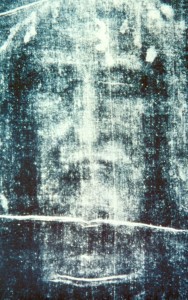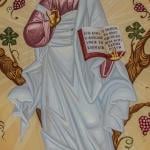From Vatican Insider:
The Man of the Shroud “underwent an under glenoidal dislocation of the humerus on the right side and lowering of the shoulder, and has a flattened hand and enophthalmos; conditions that have not been described before, despite several studies on the subject. These injuries indicate that the Man suffered a violent blunt trauma to the neck, chest and shoulder from behind, causing neuromuscular damage and lesions of the entire brachial plexus.”
This is the conclusion four university professors arrived at in an in-depth study they carried out on the image of the crucified Man on the Turin Shroud…
…The first discovery the four experts made, is that the Man of the Shroud underwent a dislocation of the shoulder and paralysis of the right arm. The person whose figure is imprinted on the Shroud is believed to have collapsed under the weight of the cross, or the “patibulum” as it is referred to in the study, the horizontal part of the cross. The Man of the Shroud the academics explain, fell “forwards” and suffered a “violent” knock” “while falling to the ground.” “Neck and shoulder muscle paralysis” were “caused by a heavy object hitting the back between the neck and shoulder and causing displacement of the head from the side opposite to the shoulder depression…
The authors of the article put forward their theory on the Man of the Shroud’s immediate cause of death. Restricted breathing and the presence of the haemothorax which put pressure on the right lung were not enough to bring about death by asphyxia. Asphyxia involves an inability to breathe which results in loss of consciousness and coma. The four experts say the fall and/or the flagellation have caused not only a pulmonary contusion but also a cardiac contusion. This, together with the serious clinical and mental condition the Man was in, may have led to a heart attack and a broken heart.











